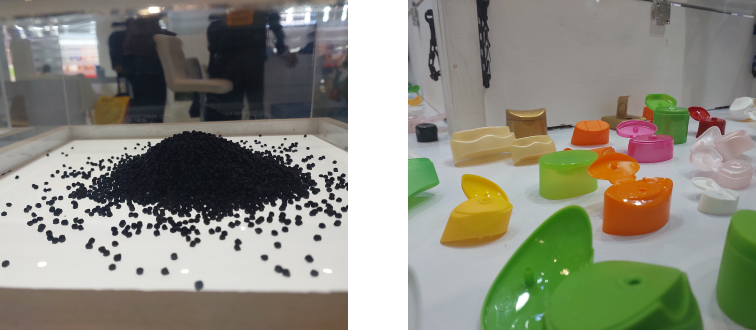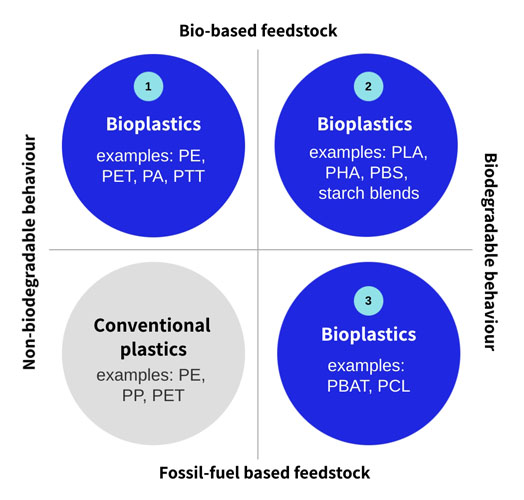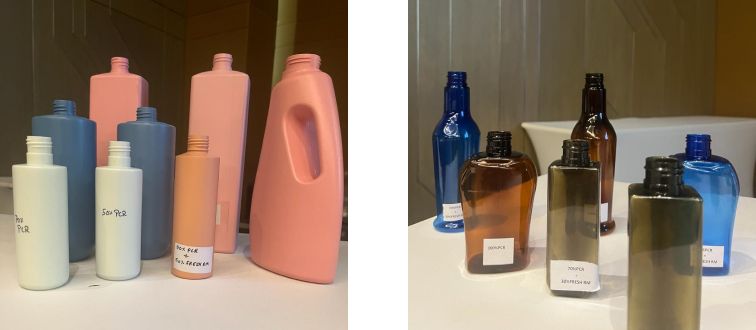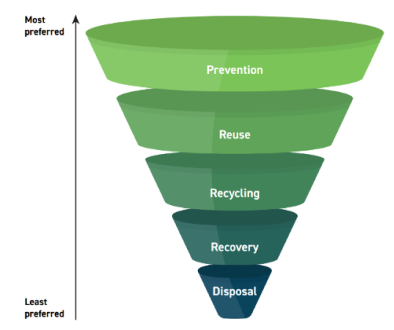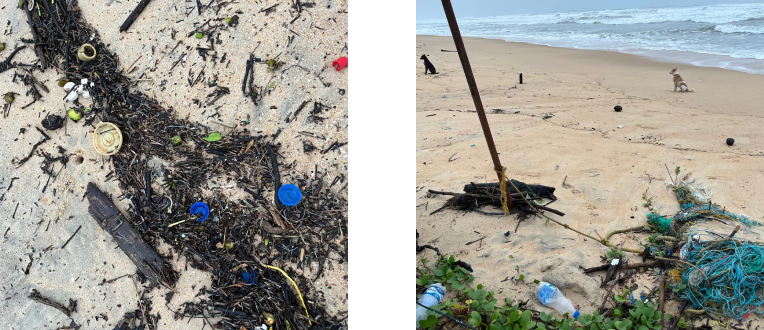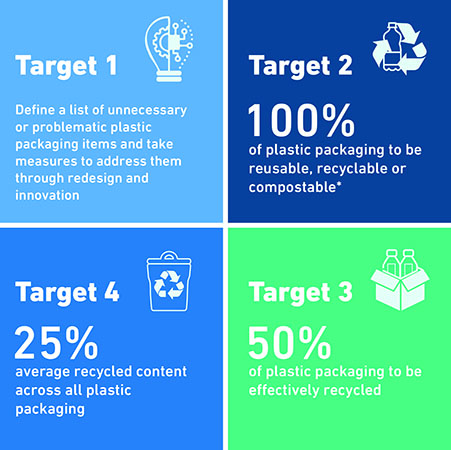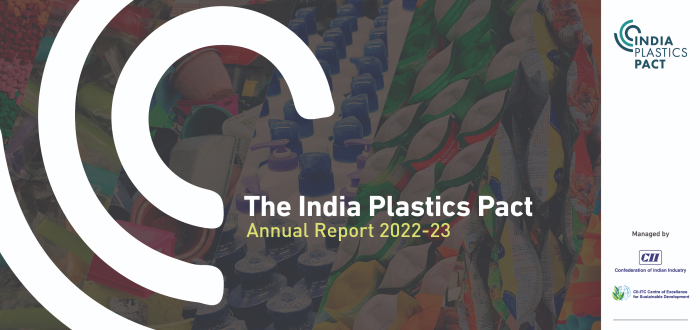The Clear on Plastics© campaign under the India Plastics Pact, a Confederation of Indian Industry initiative, aims to provide clear, simple, and scientifically accurate information on plastics to citizens.
Whether you are a consumer, a business, or a policymaker looking for basic information on plastics, or want to learn how to reduce plastic pollution – this webpage is your one-stop guide.
The
information is presented as FAQs divided into four sections.
-
Getting the basics right
Breaks down plastics – what they are, their different types, and why it is important to segregate (separate) plastic waste at source.
-
Answers to common questions
Addresses commonly asked questions such as, why is ‘crush the bottle after use’ written on plastic bottles, or whether paper straws are better than plastic straws.
-
Good to know
Brings awareness on some national and international policies related to plastic and plastic packaging.
-
What can I do to reduce plastic pollution?
Provides simple and practical tips on how you can reduce, reuse, and dispose of plastic waste properly to help minimise plastic pollution.
Getting the basics right
Plastics are polymers (from Greek poly for many and mer for a unit or part), which are thus made up of many identical repeating units – hundreds or thousands of them – like beads making up a necklace or a rosary. Each unit is called a monomer. For example, ethylene is a monomer and many units of ethylene, when joined, form a polymer, namely polyethylene.
The monomers themselves are typically made of carbon and hydrogen (and sometimes oxygen), collectively referred to as hydrocarbons, which can be sourced from plants or from crude oil, natural gas, or coal (fossil fuels).

Plastics are mostly made from hydrocarbons extracted from crude oil in four steps.
- Extraction. Crude oil is extracted from oil wells.
- Refining.
Crude oil is separated, by heating, into different products, each emerging at a
different temperature.
- Polymerization. The monomers obtained from refining process are combined into polymers.
- Compounding and processing. The liquid polymers turn solid at room temperature and are moulded into pellets. Different chemicals are added to the pellets to obtain desired properties in products.
Plastics can be grouped into two major families.
Thermoplastics soften when heated but harden again on cooling, which makes them suited to recycling. Thermoplastics are used in packaging and consumer goods.
Thermosets retain their shape once moulded, do not soften when melted, and therefore cannot be recycled. Thermosets are used in electrical appliances and as construction materials.
Single-use plastics are designed to be used only once and thrown away after that. All disposable products fall into the category of single-use, which include plastic spoons, cups, plates, stirrers, and so on.
Such items are often used on the go and are therefore often found as litter in cities, villages, and beaches.
To address the challenge of plastic pollution,
alternatives such as bioplastics, biodegradable plastics, and compostable
plastics have emerged in recent years. However, citizens are often confused about
such plastics because although the terms ‘bio’ and ‘compostable’, which suggest
that the plastics are ‘green’ and ‘environment-friendly’, the materials can have
the same look and feel as conventional plastics. Read more to know some important
differences between such plastics and conventional plastics.
Compostable plastics can be degraded - but only under specific conditions and over a definite time frame. Several conditions must be satisfied before using compostable plastics or switching to them from conventional plastics.
- Compostable plastics must be collected separately from conventional plastics.
- The infrastructure required for processing compostable plastics must be available.
- The end product should have a strong market.
- Compostable plastics must be prevented from contaminating the normal recycling stream.
Compostable plastics should be considered as alternatives to conventional plastics only if they
- are certified as compostable to an international compostability standard (for instance, EN 13432 or any equivalent Indian standards),
- leave no microplastic residue,
- are clearly labelled as compostable, and
- are used and disposed of in closed-loop or controlled systems with appropriate infrastructure available for effective treatment (hotels, malls, catering services, and airports, for example, are places that can meet these conditions).
Plastic recycling typically involves the following steps.
- Collection from households, businesses, and public spaces
- Sorting by polymer type, colour, and quality (manually or mechanically)
- Cleaning to remove contaminants
- Shredding into flakes
- Melting into pellets
- Making into new products
Plastic is a popular and versatile material with several applications, and recycling plastic offers several benefits.
Recycling
- reduces the need for extracting, refining, and processing precious raw materials
- saves the energy used for producing virgin (fresh) plastic materials
- saves water (production of virgin, or new, plastics requires more water than that for recycling plastics)
- decreases the amount of waste going to landfills
- lowers emissions of gases into the atmosphere
- generates employment opportunities.
A wide range of products can be made from recycled plastics including
- packaging materials such as bottles, food trays, containers, carry bags, and wrapping film
- consumer goods such as furniture, textiles, electronics, clothing, and automobile parts
- construction materials such as plastic pipes, tiles, roofs, walls, and insulating materials.
The best case is when recycled plastics are used to make
the same product again (closed-loop recycling).
The waste that we generate at home, also known as municipal solid waste (MSW), is a mix of materials, including biodegradable waste, non-biodegradable waste, and hazardous waste.

Segregation
at source refers to segregating waste at the point at which it is generated – homes, offices, parks, and malls,
for example – into two separate streams: wet and dry. Waste can be segregated into many other categories too;
for example, in some countries paper, metal, glass, and plastic waste is each collected separately at the
household level.
Wet waste is mainly kitchen and garden waste and includes vegetable and fruit peels, leftover food, etc. and can be composted. Dry waste comprises plastic, paper, glass, and metal, all of which are recyclable.
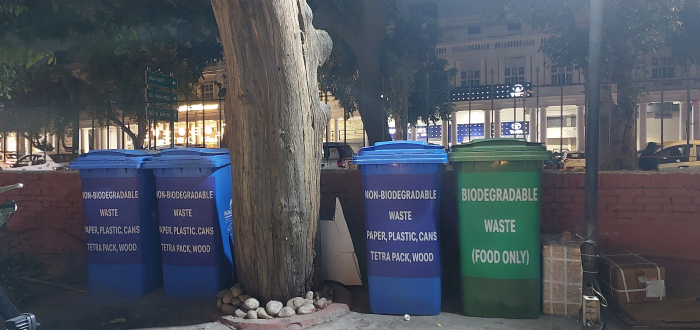
Segregation of waste at source is the first step in
effective waste management and is useful in many ways.
Segregation
- facilitates composting of wet waste, which is about 50% of the total waste we generate daily (The compost made from wet waste is rich in nutrients, which can be added back to the soil to enhance its quality.)
- prevents contamination of dry waste, resulting in better recycling and the recovery of valuable resources
- lowers the costs of segregating waste later by waste workers and of removing contaminants from recyclable waste streams
- decreases the amount of waste sent to landfills, thereby reducing the contamination of soil and water from leachate: a toxic liquid formed when rainwater and moisture present in waste mix with hazardous and unsegregated waste in landfills.
Used packaging and plastic products or discarded objects are collected, segregated, and sent for recycling. The recycled materials are made into new products or used for remaking the same product.
Some plastics are burned to produce electricity. Although this option reduces the volume of plastic waste, it pollutes the environment.
If not managed properly, plastics end up in landfills, where they remain intact for hundreds of years. If streets, parks, and beaches, for instance, are littered with plastics, they can eventually reach the ocean, harming marine life and natural ecosystems.
Proper management of waste is thus crucial in deciding the ultimate fate of plastics.
Reducing means using less. Reducing plastic consumption can have several benefits.
- Plastics are made from fossil fuels, and reducing our use of plastics reduces the need for extracting these finite resources.
- Reducing generates less waste, which means smaller volumes to be recycled and for landfills.
- Consuming less saves energy and water used in producing and recycling plastics.
- Using less of plastics means lowering the emissions of greenhouse gases.
We can reduce our consumption of plastics in many ways.
- Simply using less: for example, carrying a bag when we go shopping.
- Reusing: technically, reusing is a part of reducing. Reusing is using things again and again and getting the most out of them. Thus, instead of buying a single-use plastic bottle, it is better to use a steel or glass bottle, which is reusable.
The India Plastics Pact unites stakeholders across the plastics value chain to reduce plastic waste and seeks to eliminate, by 2030, all unnecessary or problematic plastics; solve the problem through redesign and innovation; and make all plastic packaging reusable, recyclable, or compostable.
Brands and businesses can reduce the use of plastics in many ways.
- Complete elimination of unnecessary and problematic plastic items
- Elimination by switching to alternative packaging materials
- Reduction in per unit weight of packaging
- Reduction through overall decrease in using plastic packaging
Signatories to the India Plastics Pact are committed to reducing their plastic packaging. Read our Annual Report 2023/24 to know more.
Answers to common questions
Coming soon...
Good to know
Coming soon...
What can I do to reduce plastic pollution?
Coming soon...
The Clear on Plastics© campaign is supported by WRAP.
Did we miss your question?
Please write to us
